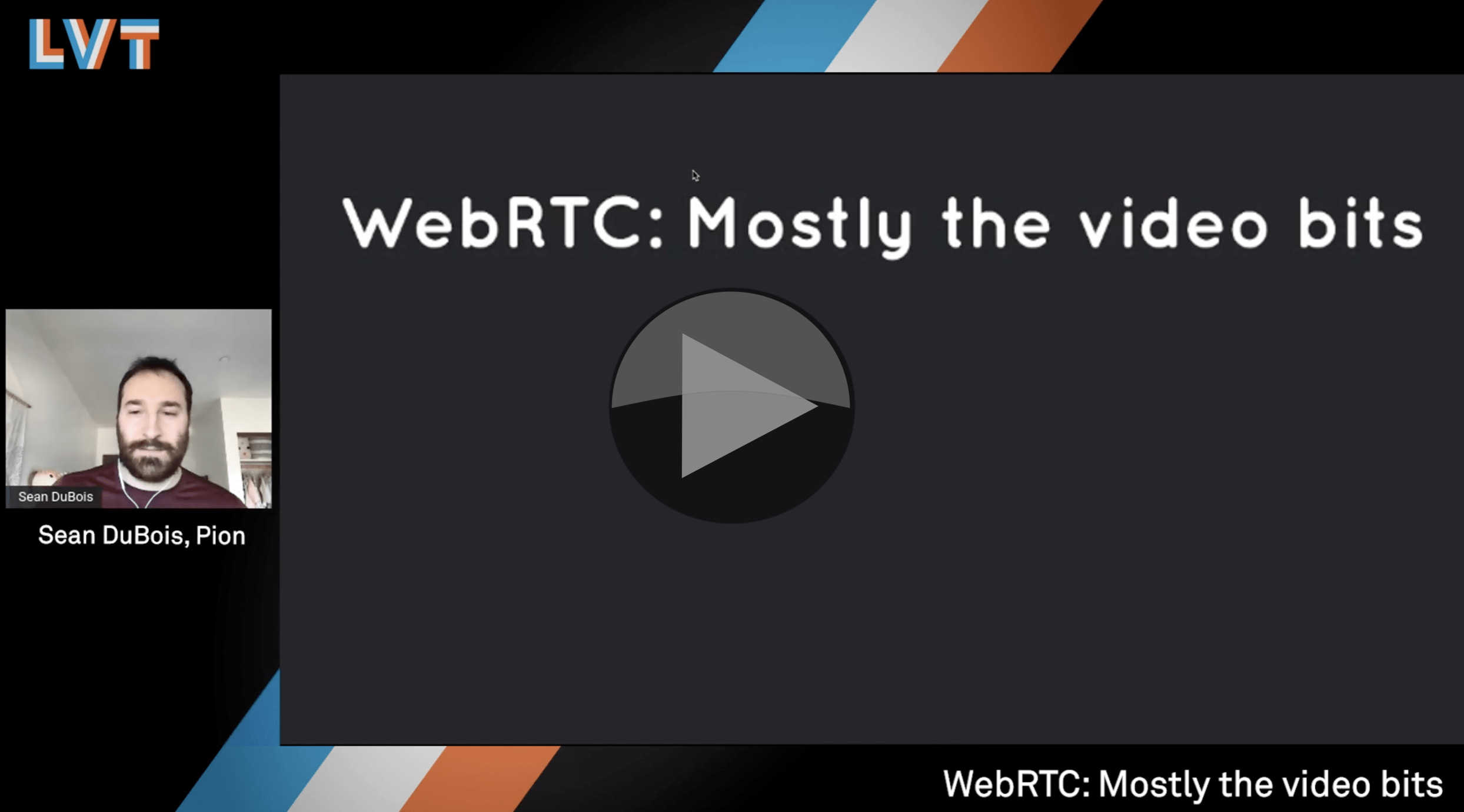Who better to dig below the surface of WebRTC, which delivers sub-second latency, than Sean DuBois, creator of the Pion WebRTC library? This video takes a different look at WebRTC to others that focus on latency or scaling. Rather Sean looks at congestion control and managing the impacts of congestion noting that people remember how bad the video got and not how nice your sign-up page was.
Congestion is inevitable in large ‘unmanaged’ networks such as the internet and on wifi and cellular networks. Sean points out that the use of MPEG codecs which add dependencies between frames magnify the effect of lost packets. With frame-by-frame codecs, dropping a frame and repeating the last one is barely noticeable, but with MPEG, many more could be damaged. WebRTC was implemented over UDP so it could use its own congestion control.
RTP and RTCP are the key to WebRTC’s congestion control. RTP is well known for carrying real-time media as it’s used for AES67 audio, SMPTE ST 2110 and ST 2022-6 to name just a few standards. RTCP is RTP’s sidekick. Whilst RTP does the legwork of carrying the media, the RTP Control Protocol (RTCP) passes messages to control the flow. In this case, Sean explains, the RTCP channel is used to tell the sender that it’s sending too much video or which packets it’s lost. In terms of mitigating congestion, the source can adjust the bitrate directly or change the resolution or the framerate of the video to bring the bitrate down indirectly.
Sean shows a summary diagram of congestion controller flow which is built to handle jitter and out of order packets. Buffers are the normal way of fixing out-of-order packets but they have a big downside of adding latency and exacerbating timing problems. WebRTC has to use the RTCP channel to make sure it can map packet timing with NTP, using Sender Reports, as each packet’s timing information is only relative. When packet loss is spotted NACK (negative acknowledgements) are sent via RTCP or if things are worse, a Picture Loss Indication is sent which request a new keyframe. Fixing any impairments that do occur can be done either with FEC or by concealing the error with some form of masking, nowadays this may be based on machine learning.
The talk finishes with a look at a number of innovative projects which use WebRTC in one way or another, including for file transfer.
Watch now!
Speakers
 |
Sean DuBois Creator, Pion WebRTC Developer, Apple |



